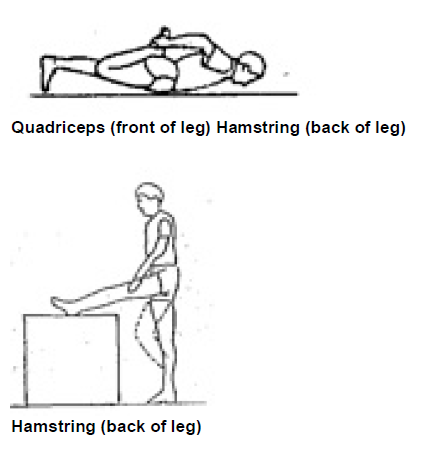Osgood Schlatters Syndrome (OSS)
This page gives you information about Osgoods Schlatters Syndrome (OSS) and how it is best managed.
What is OSS?
- OSS is a childhood condition, which affects growing bones around the knee joint.
- OSS causes inflammation of the large muscle tendon (patellar tendon) that straightens the knee. This area is particularly affected by overloading the muscle during sports and usually does not follow any injury.
- OSS happens more often in boys than girls aged between 10 and 15 years, frequently following a rapid growth spurt.
- OSS may affect one or both knees and is a common cause of knee pain in teenagers and young adults.
- OSS is often associated with over-use in sport usually those sports involving jumping or rapid changes of direction such as football, gymnastics, basketball and mountain- biking
Symptoms of OSS
Typical symptoms are pain, swelling and tenderness (in front of and 5cm below the knee joint where there is a bony bump called the tibial tubercle). This is where the large thigh muscle attaches to the lower leg bone. When pain is severe it may cause limping.
Treatment
An operation is not necessary and the treatment is a combination of rest, pain relief and exercise.
Symptoms will generally take 1 to 2 years to go away but may continue until the person has finished growing.
Any activities that aggravate the pain and swelling need to be reduced to a level that the young person can tolerate.
Exercise may aggravate the pain but will not cause damage to the knee.
Applying a heat pack to the knee for 15 minutes before exercise or an ice pack for 20 minutes after exercise can minimize swelling.
Please ask for a copy of leaflet ‘Ice and heat treatment at home GHPI0659’.
Pain relieving medication may reduce pain and swelling but you will need to discuss the options available with a pharmacist or your GP.
An X-ray is not always required but one may be taken of the knee to confirm the diagnosis.
The school should be informed and asked to make allowances for the condition.
The use of specialist insoles (provided by podiatry) can also help in severe cases.
Stretches
The child should stretch their leg as shown in the images below and hold for 30 seconds. This should be done 3 times a day.
Long-term outcome
A balance of rest and exercise are important in managing the condition. There are no long-term complications of OSS although the tibial tubercle (bony bump below the knee) may remain enlarged after symptoms have disappeared.
Contact information
For self-referral to podiatry or physiotherapy, please use the details below.
Gloucestershire Podiatry Service
Tel: 0300 421 8800
Website: www.ghc.nhs.uk/our-teams-and-services/podiatry
Therapy Department
Gloucestershire Royal Hospital
Tel: 0300 422 8527
Cheltenham General
Tel: 0300 422 3040
Monday to Friday, 9:00am to 4:00pm
Website: www.gloshospitals.nhs.uk/our-services/services-we-offer/physiotherapy/how-can-i-see-physiotherapist/
